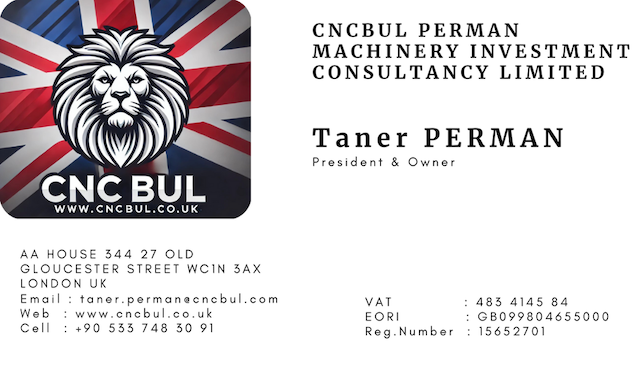What are the issues to be considered before buying a Plate Bending 4 Rolls Machine?
Before purchasing a Plate Bending 4 Rolls Machine, several critical factors must be considered to ensure that the machine will meet the specific requirements of your operations. This decision involves technical, operational, and economic considerations. Below is a detailed and comprehensive explanation of these factors:
1. Material Specifications
Material Type
- Different materials have varying bending properties. It’s essential to understand the types of materials you will be working with, such as steel, aluminum, or stainless steel. Each material has different yield strengths and bending characteristics, which influence the machine’s required power and design.
Material Thickness and Width
- The maximum and minimum thicknesses of the material you plan to bend are crucial parameters. The machine must be capable of handling the thickest and widest plates you will use. Check the machine’s capacity for different materials, as the bending force required increases with thickness and width.
2. Machine Specifications
Bending Capacity
- The primary specification to consider is the machine’s bending capacity, which includes the maximum thickness and width of the plate it can handle. Ensure the machine can perform pre-bending and rolling operations for the required material specifications.
Roll Configuration and Size
- The diameter and length of the rolls are critical. Larger diameter rolls can handle thicker materials and provide better bending accuracy. The roll length should match or exceed the width of the plates to be bent.
Roll Material and Surface Finish
- The rolls should be made of high-strength, wear-resistant material to ensure durability and longevity. The surface finish of the rolls affects the quality of the bend and the appearance of the final product. Smooth, polished rolls are preferable for high-quality surface finishes.
3. Precision and Accuracy
Positioning Accuracy
- The machine’s ability to accurately position the rolls is vital for achieving precise bends. Check for advanced control systems that provide fine adjustments and high-resolution encoders for accurate positioning.
Bending Accuracy
- The precision of the bends is influenced by the machine’s rigidity and control system. Look for features like CNC control with automated positioning and bending sequences, which enhance accuracy and repeatability.
4. Control System
Manual vs. CNC Control
- Manual machines are less expensive but require skilled operators and are less precise than CNC machines. CNC-controlled machines offer automated control, higher precision, and repeatability, making them ideal for complex and high-volume production.
User Interface
- The ease of use of the control system is important. A user-friendly interface with intuitive programming capabilities reduces the learning curve and increases productivity. Look for machines with graphical displays and touchscreens for easy operation.
5. Operational Efficiency
Cycle Time
- The time required to complete a bending cycle impacts overall productivity. Machines with faster cycle times and efficient automation can significantly enhance production rates.
Setup Time
- Consider the time required to set up the machine for different jobs. Machines with quick-change roll systems and automated adjustments reduce downtime and increase operational efficiency.
6. Machine Rigidity and Construction
Frame Design
- The rigidity of the machine’s frame is crucial for maintaining accuracy during bending operations. A robust, welded steel frame minimizes deflection and ensures consistent performance under heavy loads.
Roll Support and Bearings
- High-quality bearings and roll supports are essential for smooth operation and longevity. Look for machines with heavy-duty roller bearings and well-supported rolls to handle the stresses of bending operations.
7. Safety Features
Emergency Stops and Interlocks
- Safety is paramount in any industrial setting. Ensure the machine is equipped with emergency stop buttons and safety interlocks to prevent accidents.
Safety Guards and Fencing
- Proper guarding and fencing around the machine protect operators from moving parts and potential hazards. Check for compliance with industry safety standards.
8. Maintenance and Serviceability
Ease of Maintenance
- Machines that are easy to maintain reduce downtime and extend the machine’s life. Look for features like accessible lubrication points, easy-to-replace wear parts, and clear maintenance instructions.
Manufacturer Support and Service
- Consider the manufacturer’s reputation for support and service. Reliable technical support and readily available spare parts are critical for minimizing downtime and keeping the machine running smoothly.
9. Cost Considerations
Initial Investment
- The cost of the machine is a significant factor. Compare the features and capabilities of different models to ensure you are getting the best value for your investment.
Operating Costs
- Consider the long-term operating costs, including energy consumption, maintenance, and the cost of consumables. Machines with higher efficiency and lower maintenance requirements can provide significant savings over time.
10. Future Needs and Scalability
Production Volume
- Assess your current and projected production volumes. Choose a machine that can handle your current needs and has the capacity to accommodate future growth.
Technological Advancements
- Consider potential advancements in technology and industry trends. Investing in a machine with up-to-date technology and the ability to integrate future upgrades can ensure long-term viability.
11. Customization and Options
Specialized Tooling
- Depending on your specific applications, you might need specialized tooling or attachments. Check if the machine can be customized with additional rolls, supports, or other features to meet your specific needs.
Software and Automation
- Advanced software and automation options can enhance productivity and flexibility. Look for machines that offer integration with CAD/CAM systems and automated material handling solutions.
Conclusion
Choosing the right Plate Bending 4 Rolls Machine requires a thorough evaluation of your specific needs and careful consideration of the technical specifications and operational features. By assessing factors such as material specifications, machine capacity, precision, control systems, operational efficiency, safety, maintenance, cost, future scalability, and customization options, you can ensure that you select a machine that will provide reliable performance, high productivity, and long-term value for your investment.

